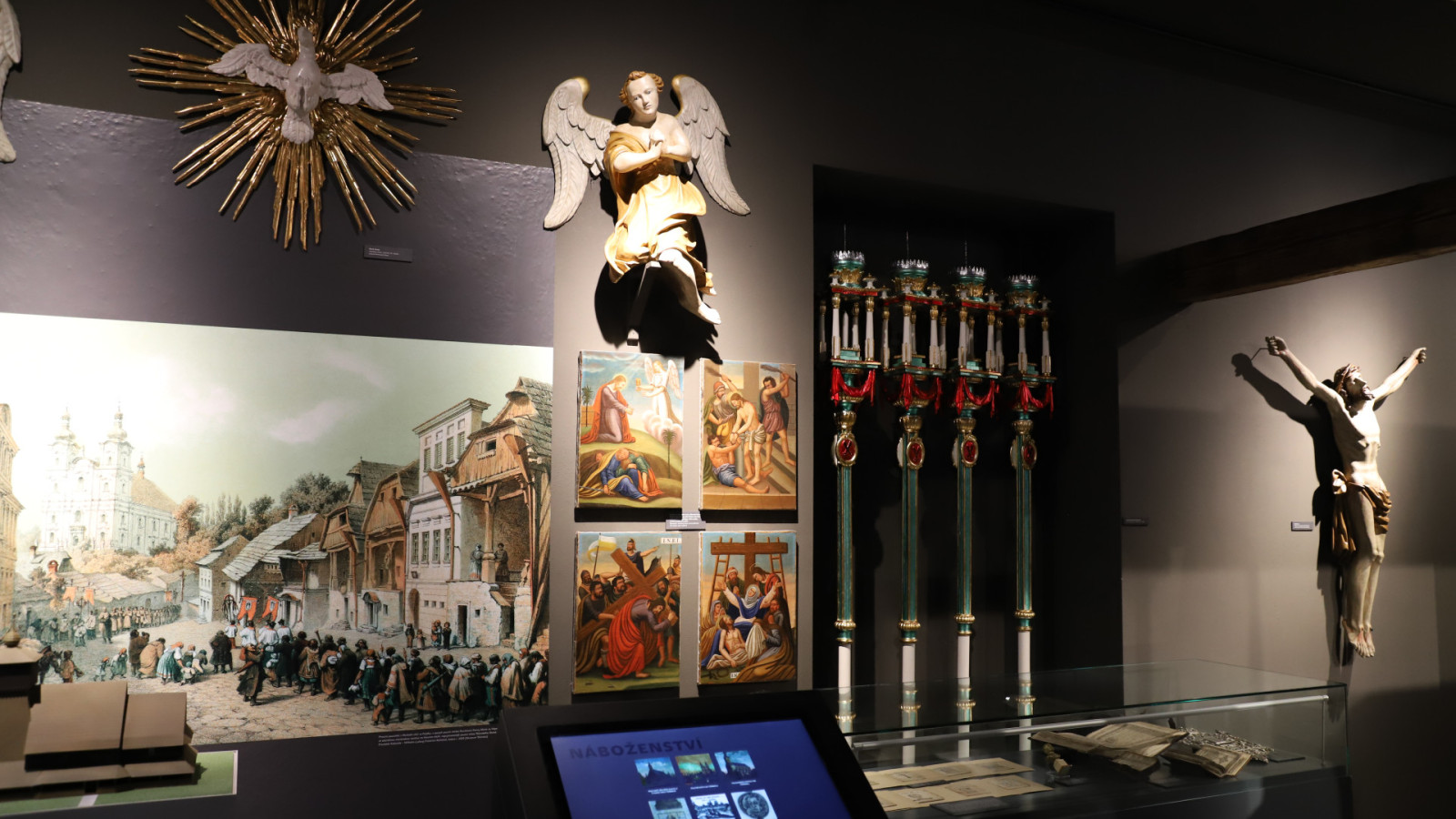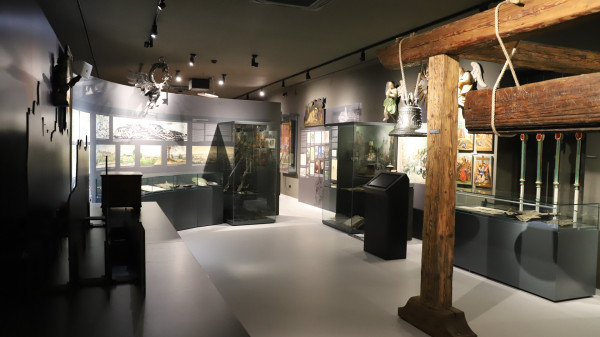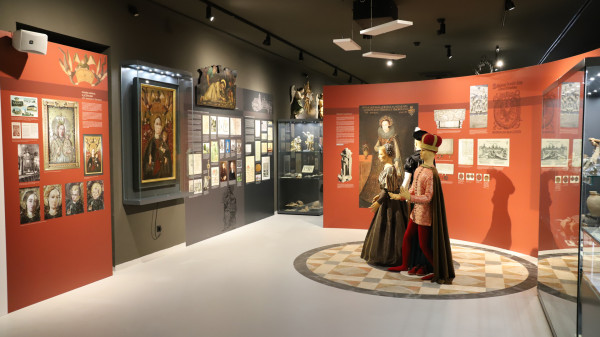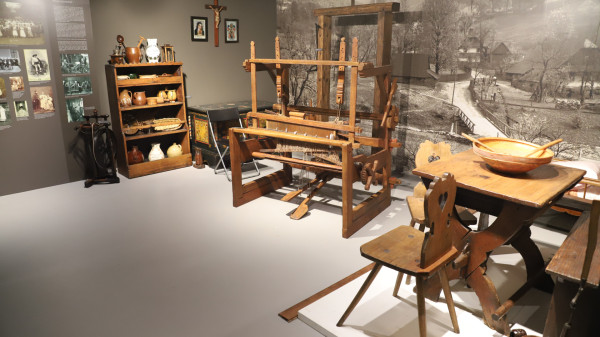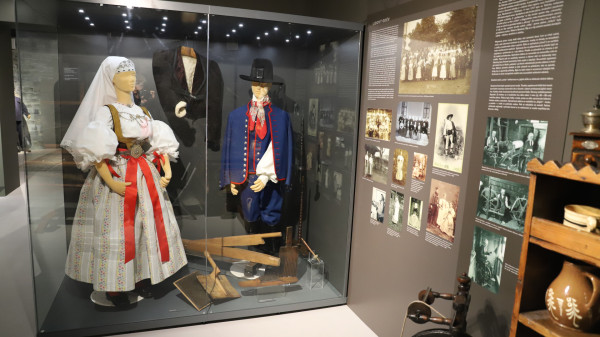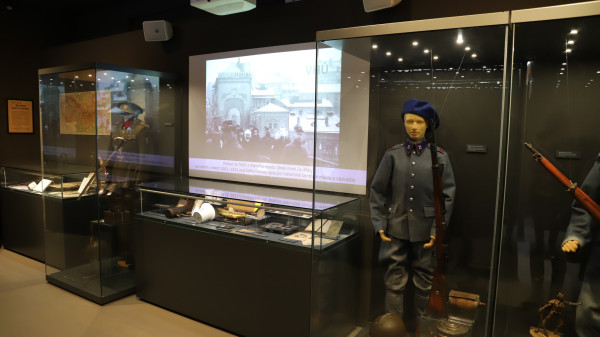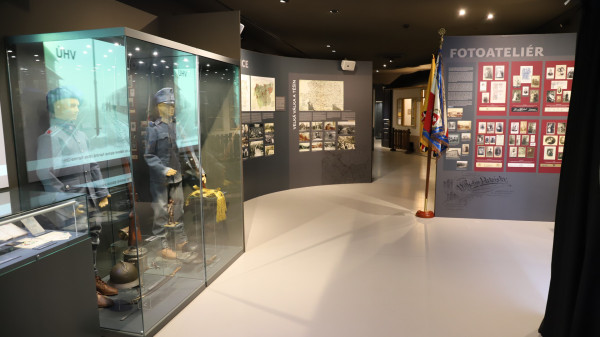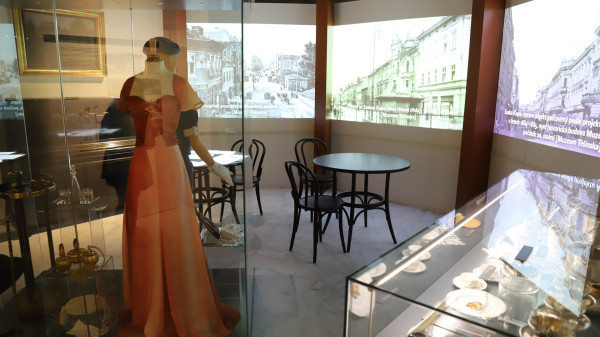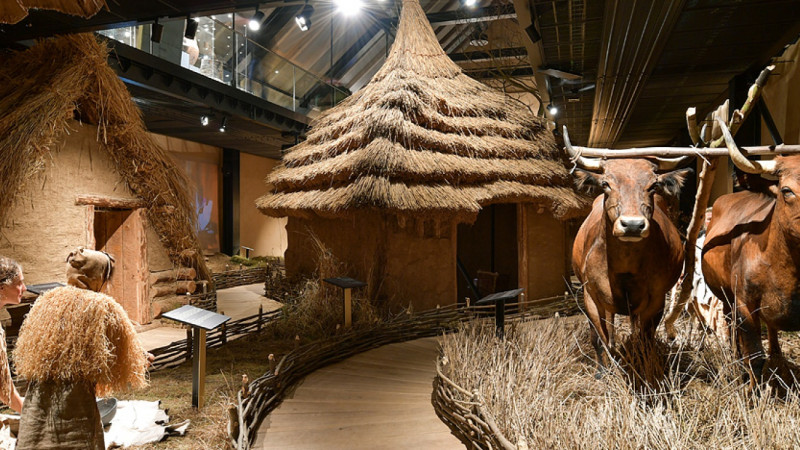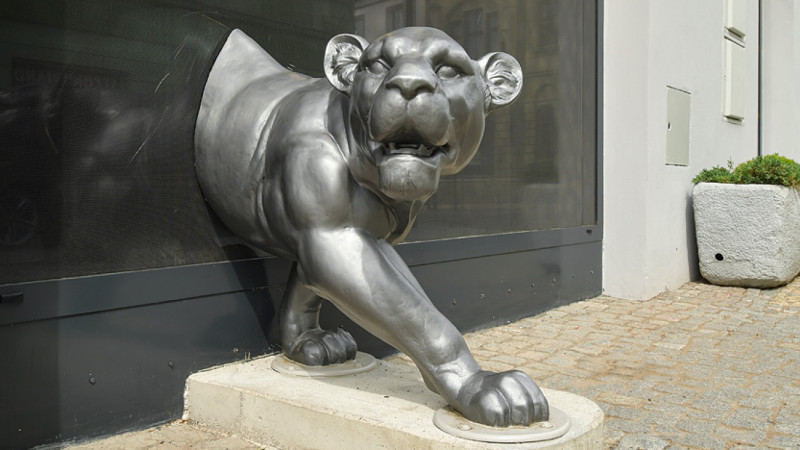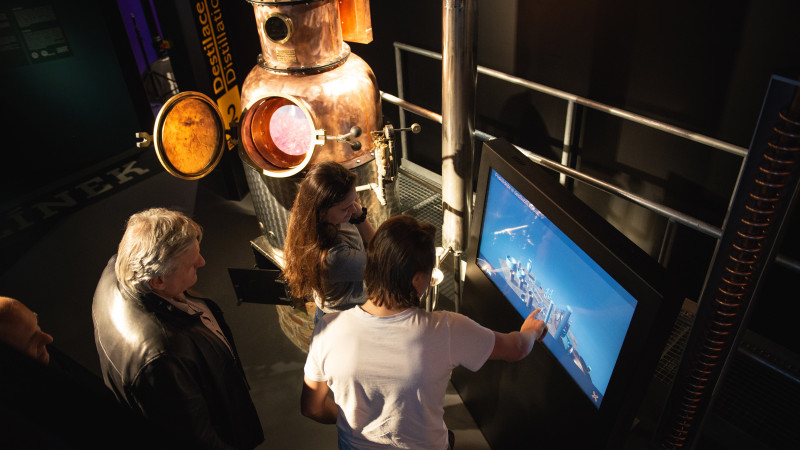
The story of Cieszyn Silesia (Teschen Silesia) in the Museum of Cieszyn Silesia
Modern exhibition with comfortable environment for visitors
Modern exhibition with multimedia elements
On June 20, 2020, the Museum of Cieszyn Silesia opened a new modern museum exhibition presenting the development of Cieszyn Silesia from prehistoric times to the recent past. It is designed as a walk through the history of the area, with the aim of also bringing closer the landscape in which it all took place. On five floors, visitors will learn about the past of this specific region, its rich material culture and diverse nature through more than 1,200 exhibits. And not only that. The whole exhibition is complemented by a number of multimedia elements that underline the atmosphere of the entire exhibition.
From the initial introduction to basic information about Cieszyn Silesia, the visitor is treated to an imaginary excursion into the depths of the country in the basement. Among other things, the visitors will learn more about the geological development in the Paleozoic period, when the massive coal seams were created, which influenced the lives of generations of inhabitants of the region. And the phenomenon of coal mining in the Cieszyn Silesia is the subject of an imitation mine shaft with a presentation of the mining business during the 19th and 20th centuries.
In the next part, the curious visitor is guided through the exhibition along a timeline to the end of the Quaternary period. The nature that has begun to develop here offers a glimpse into a forest where beasts roam, birds of prey fly, and beavers inhabit the area around the river. Several thousand years ago, a man enters this landscape and starts to cultivate it for their own benefit. Unique findings from archaeological sites are then complemented by an animation of grain roasting by the Slavs through a demonstration. The next hall takes visitors back to the Middle Ages, when the Piast princes ruled the Cieszyn Silesia from their fortified castles. Gothic art is represented by the most valuable exhibit of the whole exhibition - the Madonna of Terlicko, a painting on wood discovered quite by chance only five years ago. A glimpse into the lifestyle of the Baroque nobility is provided by the château chamber with its rich interior, which is in contrast with the village dwellings of the subject people and the way they farmed.
On the next floor, the visitor finds himself in the era of the Industrial Revolution, and is met by a steam-draped locomotive bursting out of a tunnel, with which the unprecedented development of heavy industry arrived in the region. Colonies began to be built for the workers, whose dwellings could be peered into, and commerce and services were on a steep upswing. However, the historical territory of Cieszyn Silesia was divided between Czechoslovakia and Poland under dramatic circumstances after the First World War. The events that took place exactly 100 years ago are commemorated in a contemporary documentary film, numerous photographs and other exhibits. Life in the new conditions of the democratic state is vividly illustrated in the Avion café, which became a symbol of Český Těšín during the First Republic. Its development as a new town, which was created from the left bank suburb of Těšín after the division of Těšín on 28 July 1920, is presented in more detail in a separate exhibition in the Variable Events Hall on the ground floor. Its opening will take place symbolically on the occasion of the 100th anniversary.
Radim Jež, Museum of Cieszyn Silesia
Photography: Lenka Ježová Bichlerová
















